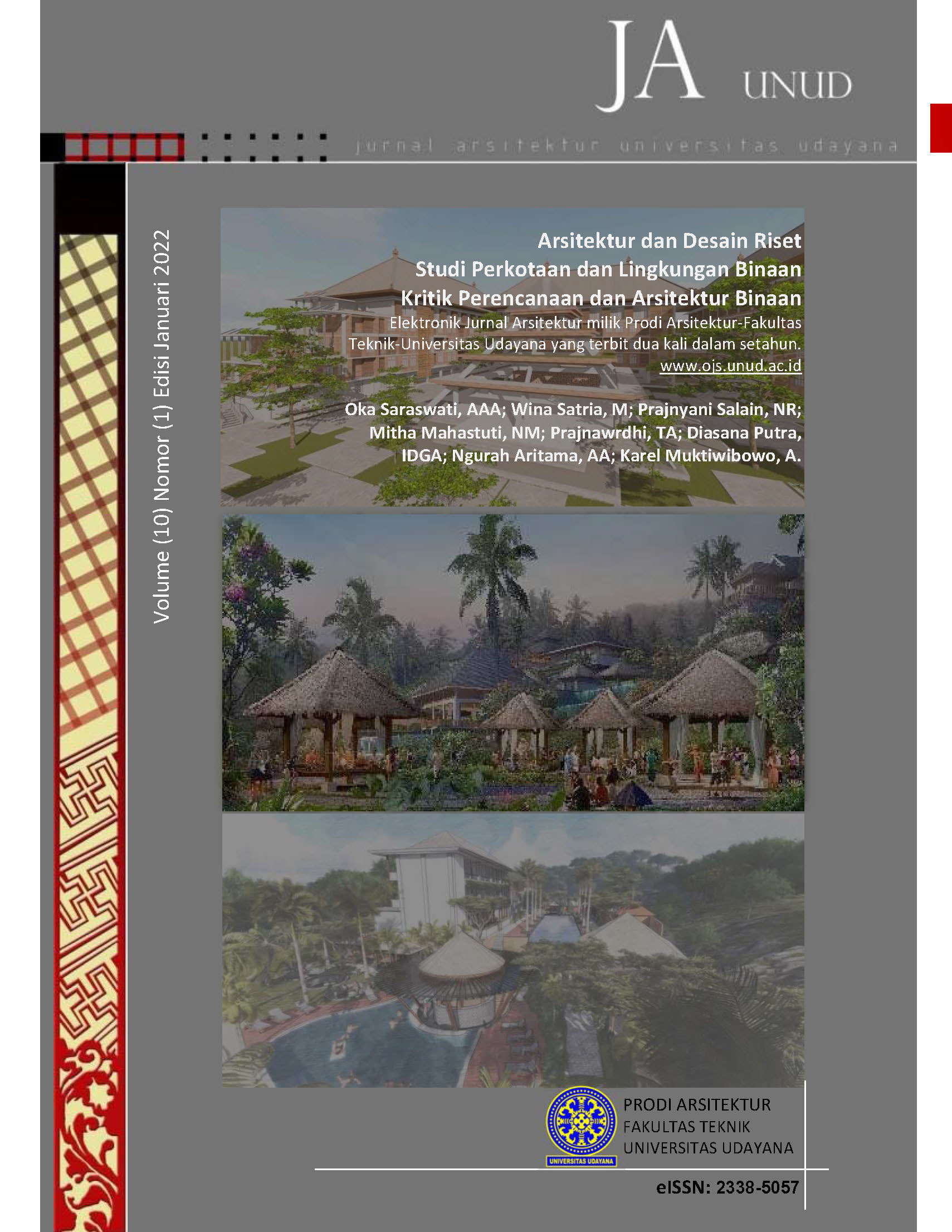Konsep Penataan Ruang Luar Sebagai Ruang Interaksi Belajar Berwawasan Lingkungan
Sekolah Menengah Pertama Negeri Berwawasan Lingkungan di Kabupaten Gianyar
Abstract
Improvement and development of the quality education continue to be carried out by the central and regional governments. Gianyar Regency is one of the areas that have problems in improving the quality of education. The number of school facilities that are not sufficient to accommodate graduate students will continue their junior high school level. Meanwhile, there is a policy of limiting learning groups and learning environment based curriculum. The design of environmentally friendly Junior High School in Gianyar Regency aims to provide and organize outdoor space as a space for interaction and learning media that integrates the environment and the natural surroundings. Through an environmentally friendly architectural approach that is applied to the arrangement of patterns and forms of building masses as well as circulation patterns elements that connect the community, buildings, and the environment. Designed as environmentally friendly school, it can produce an outdoor space that is not only functioned as a link and binder to the building mass but an outdoor space that is oriented towards the application of environmentally friendly principles, such as reducing the use of excess energy, the use of local and environmentally friendly materials, and the application of environmentally friendly principles. reduce, reuse, recycle.





